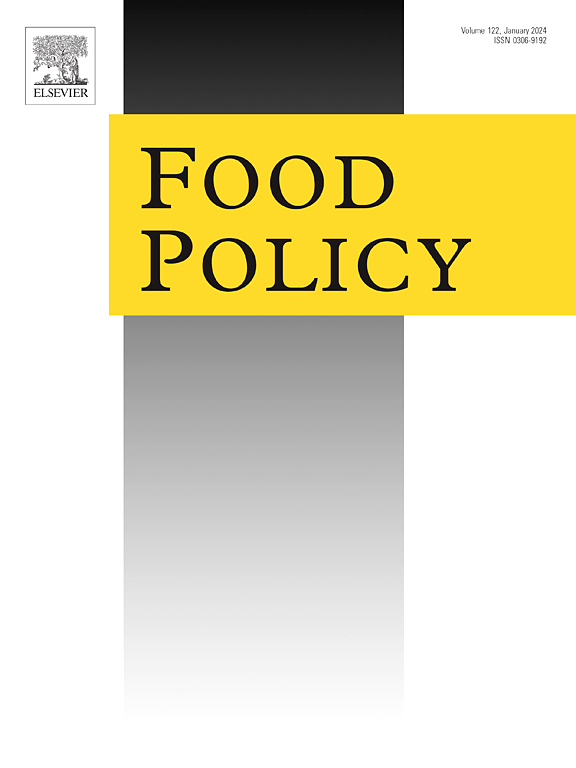Better supply elasticities improve commodity policy: The federal response to the Covid-19 pandemic
IF 6
1区 经济学
Q1 AGRICULTURAL ECONOMICS & POLICY
引用次数: 0
Abstract
Accurate supply parameters are essential for policy analysis, especially since they often support taxpayer-funded relief programs costing billions of dollars. This study incorporates a broader dataset than traditional methods and applies modern, straightforward econometric techniques to estimate marketing and supply elasticities for the U.S.’s top crops: corn and soybeans. While rarely examined, marketing elasticities, at 3.27% for corn and 2.86% for soybeans, capture the rate at which producers market harvests based on expected cash-futures basis changes. A 3SLS approach estimates supply elasticities for corn and soybeans at 0.28 (95% CI: 0.09–0.47) and 0.12 (95% CI: 0.007–0.22), respectively; we use these elasticities to show that USDA’s COVID-19 compensation programs underestimated losses to the producers of both commodities.
更好的供应弹性改善商品政策:联邦政府对Covid-19大流行的反应
准确的供给参数对政策分析至关重要,特别是因为它们经常支持耗资数十亿美元的纳税人资助的救助计划。这项研究结合了比传统方法更广泛的数据集,并应用现代、直接的计量经济学技术来估计美国主要作物——玉米和大豆的市场和供应弹性。市场弹性(玉米为3.27%,大豆为2.86%)反映了生产商基于预期现金期货基础变化对收成进行市场销售的速度,但很少有人对其进行研究。3SLS方法估计玉米和大豆的供应弹性分别为0.28 (95% CI: 0.09-0.47)和0.12 (95% CI: 0.007-0.22);我们利用这些弹性表明,美国农业部的COVID-19补偿计划低估了这两种商品生产者的损失。
本文章由计算机程序翻译,如有差异,请以英文原文为准。
求助全文
约1分钟内获得全文
求助全文
来源期刊

Food Policy
管理科学-农业经济与政策
CiteScore
11.40
自引率
4.60%
发文量
128
审稿时长
62 days
期刊介绍:
Food Policy is a multidisciplinary journal publishing original research and novel evidence on issues in the formulation, implementation, and evaluation of policies for the food sector in developing, transition, and advanced economies.
Our main focus is on the economic and social aspect of food policy, and we prioritize empirical studies informing international food policy debates. Provided that articles make a clear and explicit contribution to food policy debates of international interest, we consider papers from any of the social sciences. Papers from other disciplines (e.g., law) will be considered only if they provide a key policy contribution, and are written in a style which is accessible to a social science readership.
 求助内容:
求助内容: 应助结果提醒方式:
应助结果提醒方式:


